| View previous topic :: View next topic |
| Author |
Message |
Craig Hagstrom
Joined: 10 Jan 2025
Posts: 33


|
 Posted: Jul 02, 2025 10:23 Post subject: Re: Libyan Desert Glass Structure Posted: Jul 02, 2025 10:23 Post subject: Re: Libyan Desert Glass Structure |
|
|
| marco campos-venuti wrote: | | I see epigenetic inclusions in LDG_14, not leaves. |
I don't know what you intend epigenetic to mean in this context. You're certainly free to hold any opinion, I'm merely presenting what I see and offering my interpretation.
For anyone needing a link, the document is at
https://archive.org/download/glass-49/Glass_71.pdf
(link normalized by FMF)
|
|
| Back to top |
|
 |
Craig Hagstrom
Joined: 10 Jan 2025
Posts: 33


|
 Posted: Jul 19, 2025 16:26 Post subject: Re: Libyan Desert Glass Structure Posted: Jul 19, 2025 16:26 Post subject: Re: Libyan Desert Glass Structure |
|
|
I had to up my photography game a bit. Got a new camera that can do better macro shots, and a lighted turntable to shoot small objects. This is a 3D model built from the blue silicone cast shown in my June 3 14:44 post above. This is about 13mm on its longest dimension.
The most interesting aspect is that the seed apparently had an individual sheath, in addition to the larger cap-shaped figure shown still embedded in the glass. This is analogous to the hull of a Spanish peanut enclosing two nuts, where the nuts then have individual reddish husks.
There is a jagged seam running vertically through this image, just left of object center. On first viewing, it might seem that part of the inner sheath is missing over about half of the nut. But the half seed shown was entirely enclosed in the cap figure, and the whole was buried in sand before the liquefaction event, so it’s reasonable to say the entire inner sheath must have also been present. I suggest this shows that some portions of the sheath were flat against the seed, and parts had separated from the seed and were flat against the outer cap.
This interpretation is supported by the transition at the top of what we might label a neck, about object center. From there up, the left sheath is raised and the right sheath is depressed. From there down, the left sheath is depressed and the right is raised. So I suggest this is a crack in the sheath, and the left and right sides were skewed centered about mid-image, where the separation between them disappears entirely. When the liquefaction event happened, some fluid ran between the sheath and the nut, and some flowed more between the sheath and the cap.
I submit that this specimen is a fossil plant part. I'm ready to hear alternate explanations.
I claim no special gift for this stuff. Everything I'm showing here can be duplicated by anyone who cares to go looking for it.
| Description: |
|
| Viewed: |
859 Time(s) |
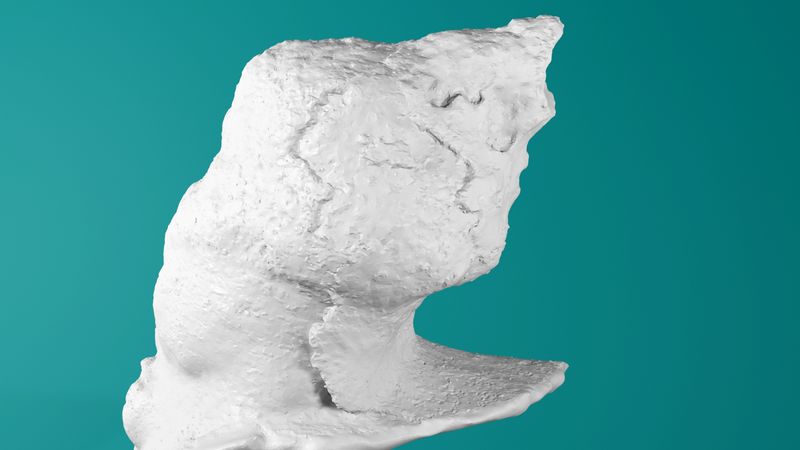
|
|
|
| Back to top |
|
 |
Craig Hagstrom
Joined: 10 Jan 2025
Posts: 33


|
 Posted: Jul 20, 2025 19:26 Post subject: Re: Libyan Desert Glass Structure Posted: Jul 20, 2025 19:26 Post subject: Re: Libyan Desert Glass Structure |
|
|
This one definitely caught my attention. I bought it because frankly it looked like an insect. I'm not ready to jump into the deep end of the pool and assert that yet, but it's certainly evocative of an insect. The specimen is a little under two inches long.
At first I thought the piece had holes that had filled with sand to be cleared out, as my other specimens have. But after cleaning up to remove possible pollen and other dirt, these appear to be exact molds of the holes. So I photographed the piece to get a better understanding.
The last three images (28, 32, 39) are shot through Karo Syrup again, which cancels most of the refraction. The background grid can be seen nearly undistorted through the specimen. If it is an insect, it seems to be clutching something. Whatever this is, it was buried in the sand in this position when the event occurred. If it is an insect, it was almost certainly dead and perhaps disarticulated. I don't know which way was up.
The slightly pinkish blob in image 39 on the upper left is a bit if pink foam that I stuffed into a large cavity. In image 28 it's on the right side. If this is an insect fossil, the cavity seems to be about where the body would be. I used the foam to make the cavity visible, otherwise you'd just be looking through it.
| Description: |
|
| Viewed: |
804 Time(s) |
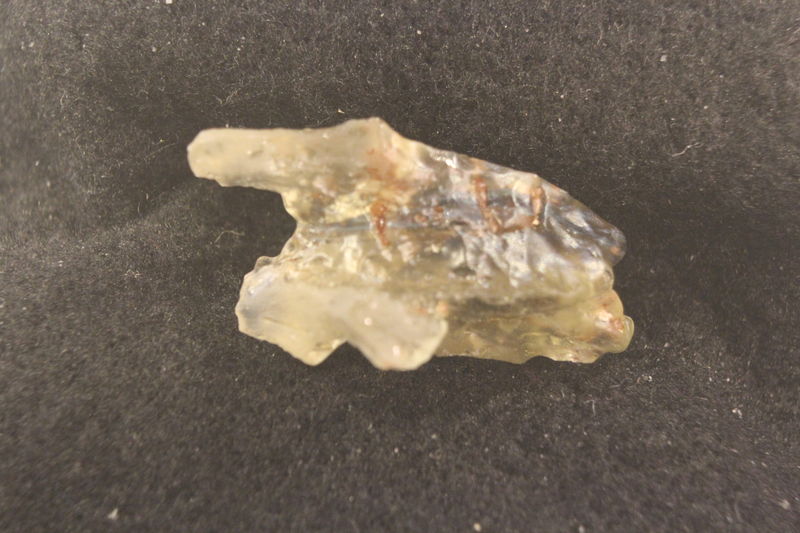
|
| Description: |
|
| Viewed: |
804 Time(s) |
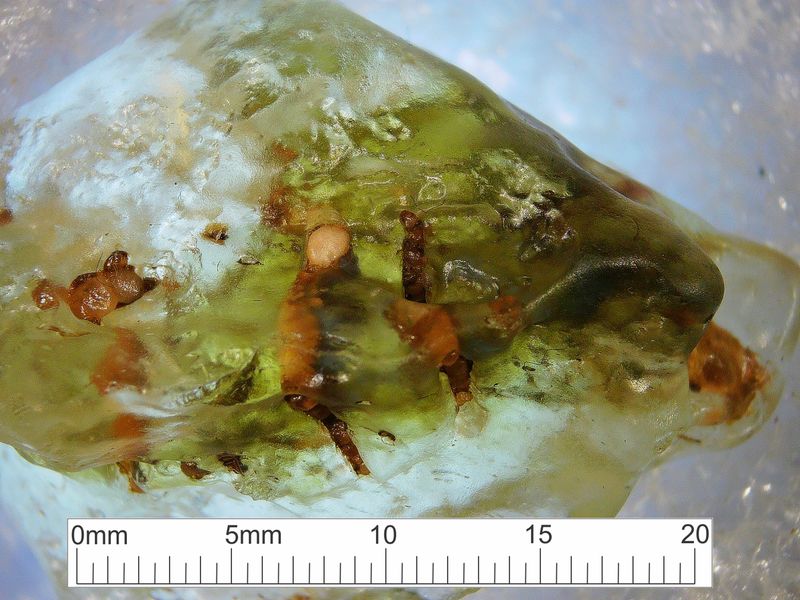
|
| Description: |
|
| Viewed: |
803 Time(s) |
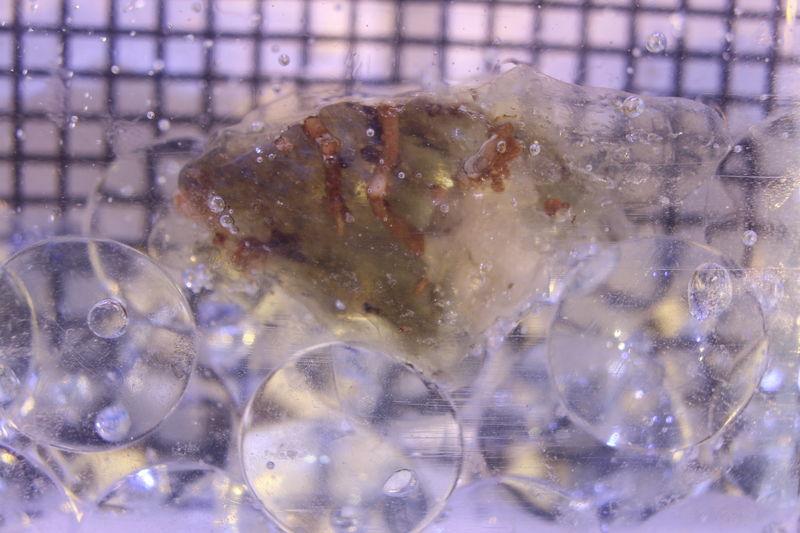
|
| Description: |
|
| Viewed: |
803 Time(s) |
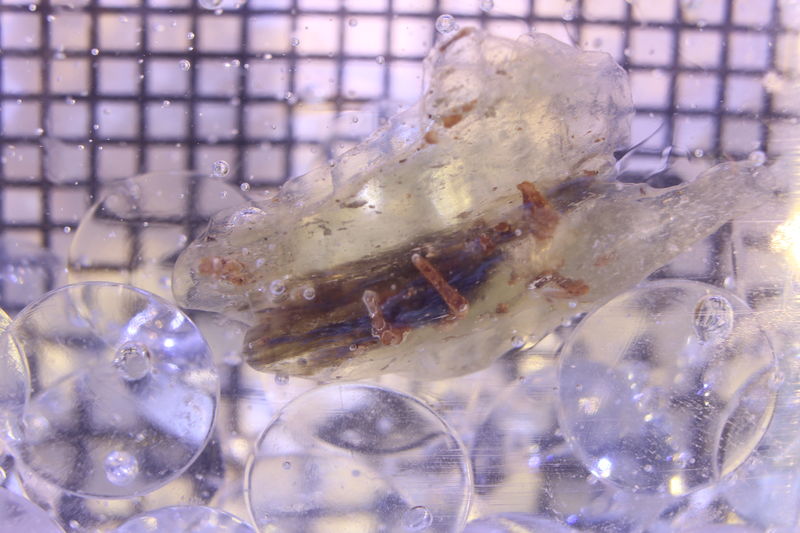
|
| Description: |
|
| Viewed: |
804 Time(s) |

|
|
|
| Back to top |
|
 |
Craig Hagstrom
Joined: 10 Jan 2025
Posts: 33


|
 Posted: Jul 20, 2025 20:40 Post subject: Re: Libyan Desert Glass Structure Posted: Jul 20, 2025 20:40 Post subject: Re: Libyan Desert Glass Structure |
|
|
| Just free-range thinking here. The legs seem to go the wrong way for the cavity to be the body of the insect the legs belong to. But if that's the body of an insect the legs were grasping, it makes more sense. I wonder if the dark stuff could be wings. I'll see if I can get a better view of that. But that's enough for today, just got done mowing the lawn. I'm gonna watch puppies on youtube. :)
|
|
| Back to top |
|
 |
Craig Hagstrom
Joined: 10 Jan 2025
Posts: 33


|
 Posted: Jul 22, 2025 15:27 Post subject: Re: Libyan Desert Glass Structure Posted: Jul 22, 2025 15:27 Post subject: Re: Libyan Desert Glass Structure |
|
|
I laid the specimen in a Karo bath under the microscope, so these images are through the surface of the syrup and a thin layer of LDG. I positioned it to make the Karo as thin as possible, but the focus still suffers. The scale is tenths of millimeters.
The first view is the extreme end of one of the supposed legs. There is clearly a sheath of tan material covering a whitish core. Note the small sharp spike of the tan material sticking out at top left, something like a greenstick fracture, but see next. This appears to be chitin over perhaps muscle, and it seems to have been abraded before the heat event.
The second is a bit higher on the leg. Note the regularly spaced spicules going off to the left. This could be hairs or spurs on an insect leg, or they could be a disintegration pattern related to the small fragments that seem to be floating nearby. The tan material makes irregular scales.
The last image is higher yet, and shows another spur. All the spurs being aligned downward suggests to me that these are insect anatomy, not a disintegration pattern, but this is not my field.
Any opinions welcome, but I'm calling this an insect.
| Description: |
|
| Viewed: |
582 Time(s) |
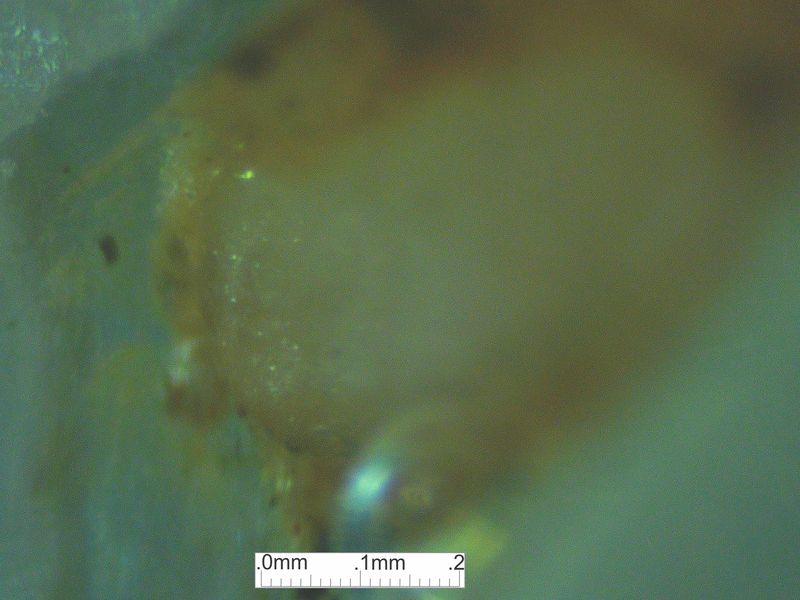
|
| Description: |
|
| Viewed: |
582 Time(s) |
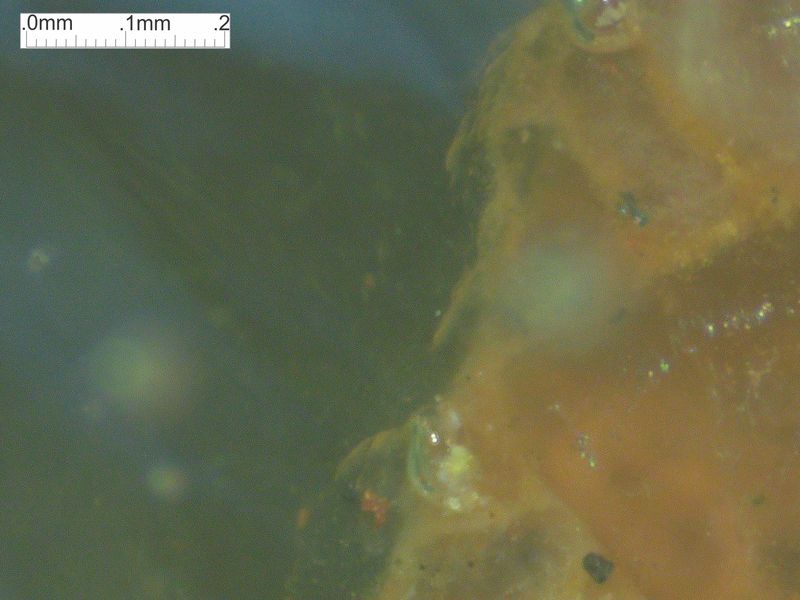
|
| Description: |
|
| Viewed: |
582 Time(s) |
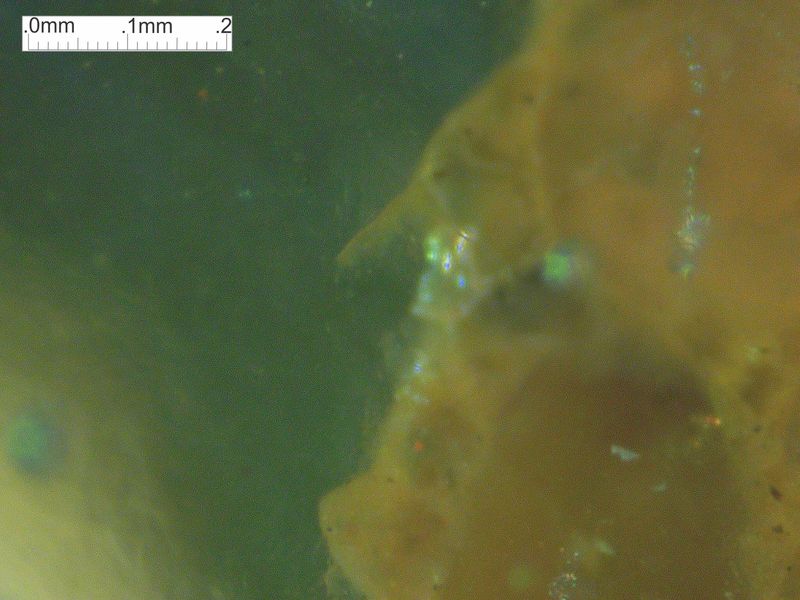
|
|
|
| Back to top |
|
 |
Craig Hagstrom
Joined: 10 Jan 2025
Posts: 33


|
 Posted: Jul 25, 2025 09:21 Post subject: Re: Libyan Desert Glass Structure Posted: Jul 25, 2025 09:21 Post subject: Re: Libyan Desert Glass Structure |
|
|
Got it out of the Karo and dried it off. This is a view of one of the legs. It appears to be increasingly fine sand grains, all glued with what might be pollen. I'm going to try some cleaning chemicals; this is way too fine and buried to pick at it. If there's a standard solvent for stuff like this feel free to chime in. :)
| Description: |
|
| Viewed: |
387 Time(s) |
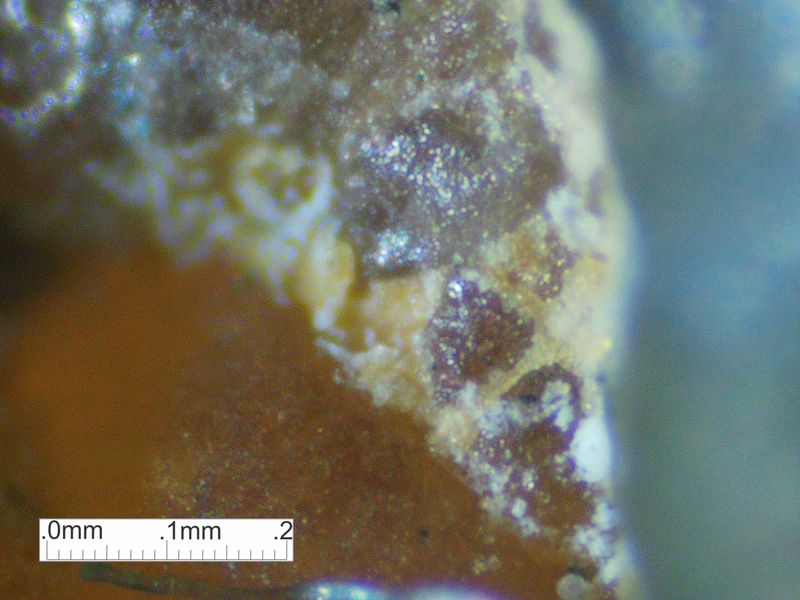
|
|
|
| Back to top |
|
 |
alfredo
Site Admin

Joined: 30 Jan 2008
Posts: 1014



|
 Posted: Jul 25, 2025 15:22 Post subject: Re: Libyan Desert Glass Structure Posted: Jul 25, 2025 15:22 Post subject: Re: Libyan Desert Glass Structure |
|
|
| Ammonium bifluoride solution in water. It will dissolve the fine-grained silica, but attack the coarser stuff much more slowly. So, if you time it right by checking frequently, you can increase the contrast by removing the interstitial stuff.
|
|
| Back to top |
|
 |
Craig Hagstrom
Joined: 10 Jan 2025
Posts: 33


|
 Posted: Jul 25, 2025 16:28 Post subject: Re: Libyan Desert Glass Structure Posted: Jul 25, 2025 16:28 Post subject: Re: Libyan Desert Glass Structure |
|
|
| alfredo wrote: | | Ammonium bifluoride solution in water. It will dissolve the fine-grained silica, but attack the coarser stuff much more slowly. So, if you time it right by checking frequently, you can increase the contrast by removing the interstitial stuff. |
Thanks for the tip. I'll hold that in reserve. Some online comments led me to try 99% isopropryl alcohol, so I tried it on some hard resin from a doug fir. Did great. So I'll soak the specimen in that for a few days and see what comes loose.
|
|
| Back to top |
|
 |
Craig Hagstrom
Joined: 10 Jan 2025
Posts: 33


|
 Posted: Jul 31, 2025 15:54 Post subject: Re: Libyan Desert Glass Structure Posted: Jul 31, 2025 15:54 Post subject: Re: Libyan Desert Glass Structure |
|
|
Still working on getting sand out of my insect-shaped cavities.
Meanwhile, here's a spectacular set of bubbles. This is some kind of grassy brush or stalk tip, maybe like the head of a grass stem. The liquefied silica apparently came down on it, trapping air like some insects trap air to go underwater. What we're seeing here is the air bubbles breaking loose to the upside, just as the silica sets up. It looks like water, but it's glass.
The 008 image is the specimen in air. Can't see the internals much. This image shows the barely visible apparent connection of the fossil to the exterior - a small hole on the left and what might be the cross section of a frond on the right.
The 013 image is the same view after adding Karo Syrup. The bubbles are breaking out to the top of the image, so that must have been up during the event. The round bubble above and left of center is in the syrup, not the specimen.
The 028 image is a side view of the fossil, viewing down from above into the syrup. This avoids the distortion from the bottle. The rock is rotated, so image-up is again real-world-up.
There is no fluid, no concretions or hazing of any kind in the bubbles. This suggests to me that the apparent openings are not actually a connection, and the gas has been completely sealed. Barometric changes have not pumped anything in. So this is the original air, and the biology is the original material. Very cool.
| Description: |
|
| Viewed: |
65 Time(s) |
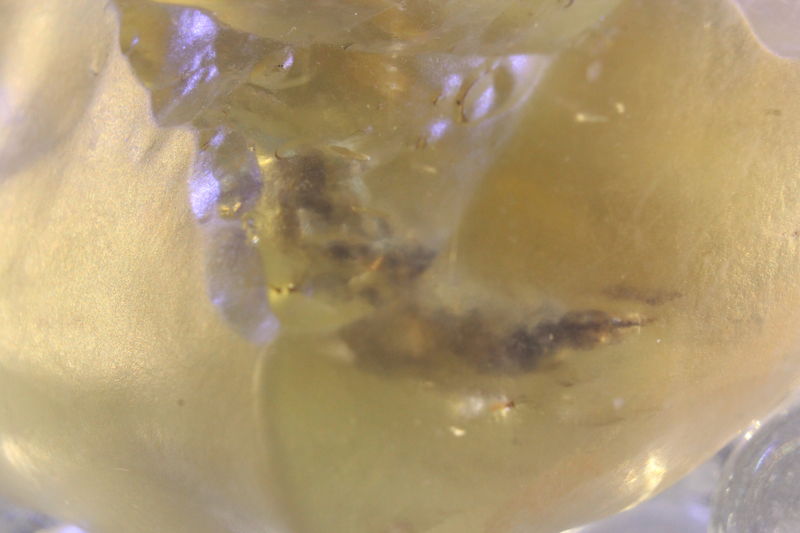
|
| Description: |
|
| Viewed: |
67 Time(s) |
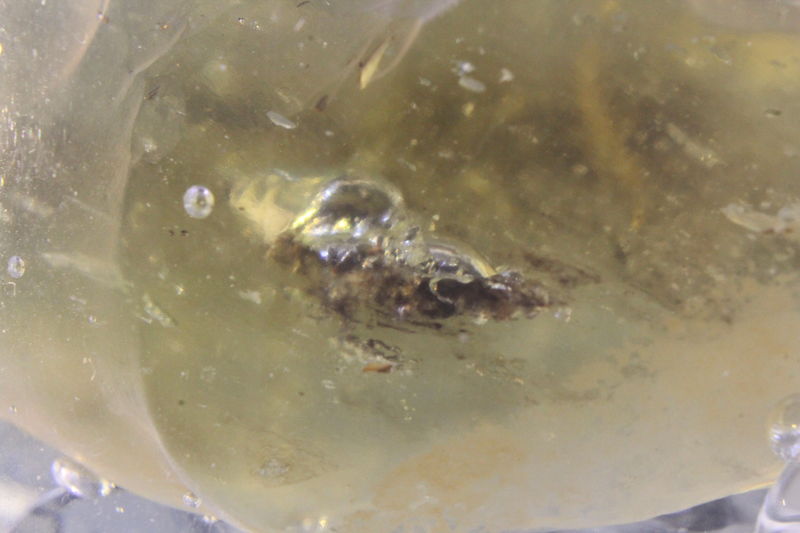
|
| Description: |
|
| Viewed: |
66 Time(s) |
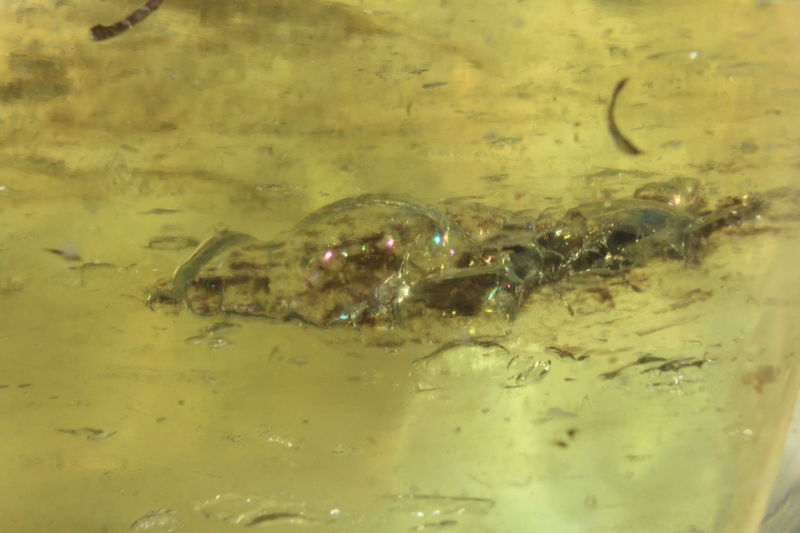
|
|
|
| Back to top |
|
 |
|





